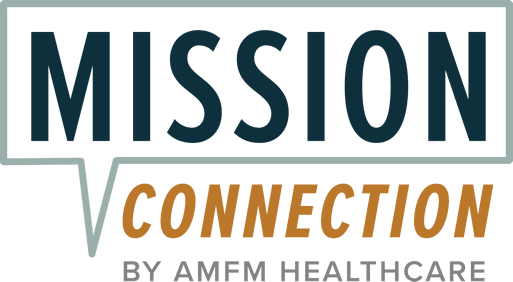Teletherapy for Severe Mental Illness: Is It Effective?

Teletherapy has become more popular in recent years, with the demand for more remote based mental health services rising.¹ While there’s certainly more demand for teletherapy, one question must still be answered: Is teletherapy effective for severe mental illness?
In 2023, the National Institute of Mental Health published a report stating that 23.1% of the adult population in the United States lives with a serious mental illness.² These include:
People with these mental health challenges require consistent and nuanced care, which leaves some people questioning if virtual therapy services are genuinely suited to people with complex mental health needs.
To begin to understand if virtual therapy for serious mental health is enough, it’s first important to understand what makes a mental health illness severe. Next, you must evaluate how telehealth for complex mental health issues has already changed mental health treatment in recent years. Telehealth has already impacted:
- Access to mental health services
- Outcomes of treatment
- Sustainability/maintenance of treatment
- Patient engagement (and comfort)
From schizophrenia to borderline personality disorder, we’ll look at what the research says, how virtual care is changing over time, and whether this approach may be right for your family.

Severe Mental Illness and Telehealth: What Is Teletherapy?
Teletherapy is mental health care that’s delivered through a digital platform or medium such as telephone calls, video conferences, and secure text messaging. Digital contact allows patients to get the mental health care they need without leaving the comfort of their home. Best of all, it’s a licensed therapist, psychologist, or psychiatrist on the other end of the “line.”
Teletherapy includes all kinds of virtual sessions, such as:
- Individual therapy
- Group therapy sessions
- Medication management
- Psychoeducation
Patients who have mobility limitations or don’t have affordable or available transport will most likely find teletherapy a convenient option. With digital health services available, mental health treatment becomes far more accessible to all. Of course, some people just feel more comfortable seeking mental health care from home.
Many people already use teletherapy for overcoming anxiety and depression, but people still question is teletherapy effective for mental illness?
What Are Considered Severe Mental Illnesses?
Severe mental illnesses (SMIs) are mental, behavioral, or emotional disorders that cause serious impairment when it comes to normal functioning. This comes down to how dramatic the impact of the mental health illness is on a person living a “normal” life.
According to the Substance Abuse and Mental Health Services Administration (SAMHSA), SMIs substantially interfere with or limit one or more major life activities.³ A common list of mental health illnesses that are considered complex, and can be severe, include:
- Schizophrenia
- Bipolar disorder
- Major depression
- Obsessive compulsive disorder (OCD)
- Post-traumatic stress disorder (PTSD)
- Borderline personality disorder (BPD)
These mental challenges come with intense symptoms, long-term care needs, and significant disruptions to daily life.
Talking therapy forms part of the treatment plan for all of these mental illnesses, but it’s not all that’s required. In most instances, patients will also require medication monitoring, ongoing clinical oversight, and support in the event of a crisis. This is why some may question if teletherapy can be enough.
That’s why understanding the limits and potential of teletherapy is an important step for families exploring care options. At Mission Connection, we can help you to determine if teletherapy is a good fit for you or a loved one.
Teletherapy Effectiveness: Is Teletherapy Effective for Severe Mental Illness?
Research increasingly supports the effectiveness of online mental health care, even for complex conditions.⁴ Studies have shown that teletherapy can produce comparable outcomes to in-person treatment for many people living with severe mental illness, especially when paired with coordinated care models.
Key benefits of teletherapy for mental illness include:
- Greater consistency due to fewer missed appointments
- Increased access for people in underserved areas
- Reduction in stigma associated with visiting mental health clinics
- Improved patient comfort and safety at home
While teletherapy comes with a wealth of benefits, it’s important to note that it’s not always the most appropriate option for all. Some patients need additional support that simply cannot be provided via teletherapy. This particularly applies to patients in an acute crisis, those without reliable internet access, or people living with others and don’t have a lot of privacy. When this is the case, in-person treatment may be better suited, or at least a hybrid model that would suit their situation and schedule.
Teletherapy for Bipolar Disorder
Bipolar disorder requires a well-thought-out care plan. Living with bipolar disorder means managing shifts in mood, energy, and activity levels. Without an effective treatment plan in place that’s well monitored, things can spiral. A typical bipolar disorder treatment plan includes talking therapy, ongoing monitoring, medication adherence, and psychotherapy.
Research tells us that teletherapy for bipolar disorder can be highly effective for diagnosing and treating bipolar disorder.⁵ In fact, people receiving teletherapy for bipolar disorder can have similar relapse rates and medication adherence compared to those receiving in-person care. That doesn’t mean that teletherapy is the ideal option for all people living with bipolar disorder, but it’s certainly a possible option.
Using teletherapy also allows therapists to maintain closer contact during mood episodes, offering check-ins and cognitive behavioral therapy (CBT) interventions in real time, when it’s needed most.
Virtual Therapy for Schizophrenia
Schizophrenia is a complex mental challenge and the treatment for it must address the likes of:
- Hallucinations
- Delusions
- Disorganized thinking
- Social withdrawal
In most instances, treatment includes medication, therapy, and support from professional mental health staff. Teletherapy is unlikely to replace the intensive treatment care needed but it can play a role in outpatient follow-up and ongoing therapy.
Some data shows promising results for teletherapy interventions, especially those involving cognitive remediation and family psychoeducation.⁶
The key to success lies in combining telehealth for severe mental illness with community-based resources and strong care coordination.
Telehealth for Major Depression
Major depressive disorder (MDD) is one of the most prevalent SMIs. Symptoms may include persistent sadness, loss of interest in activities, changes in appetite, and thoughts of self-harm. Can Telehealth for severe depression be effective? The answer is yes!
People living with major depression could struggle in multiple ways. Just leaving the house may feel like an insurmountable challenge. In this instance, teletherapy makes getting mental health help so much easier. This can overcome the motivation to get help and also overcome transport, mobility, and time challenges.
Combining therapy methods like CBT and interpersonal therapy (IPT) can be just as effective online as they are in person. In fact, many people report feeling more at ease opening up from the comfort of their own space. That sense of privacy can make a meaningful difference when addressing serious mental health concerns through virtual care.
Online Therapy for Obsessive Compulsive Disorder
A specific form of CBT is often used to treat OCD, especially when a patient opts for online therapy. This is called exposure and response prevention (ERP), and it’s a popular telehealth go-to.
The effectiveness is uncovered in the statistics. A randomized controlled trial that was published in 2020 explains that virtual ERP significantly reduced OCD symptoms over 12 weeks of treatments. In fact, the effects of teletherapy could be easily compared to in-person treatment.⁷ While practicing exposure exercises at home is convenient, it’s about more than that. The fact is, triggers exist in a patient’s everyday life, making practice at home highly effective for those faced with real-life triggers as they happen.
Teletherapy for Post-Traumatic Stress Disorder
Telehealth has become a widely accepted treatment pathway for PTSD, especially among veterans and trauma survivors. Video-based CBT, EMDR (Eye Movement Desensitization and Reprocessing), and narrative therapies are all showing strong results.
In fact, the Department of Veterans Affairs has integrated virtual PTSD programs into their national network due to their accessibility and efficacy.⁸
Virtual therapy sessions mental health options allow for safe, controlled environments when confronting trauma narratives – a crucial element in mental health treatment through teletherapy for PTSD.
Virtual Therapy for Borderline Personality Disorder
Treating BPD often involves dialectical behavior therapy (DBT), which focuses on emotional regulation, mindfulness, and interpersonal effectiveness.
Virtual delivery of DBT can be effective, especially when combined with online skills training and coaching. While BPD can involve crisis behaviors, ongoing virtual support can improve emotional regulation and reduce self-harm tendencies.
Virtual therapy for borderline personality disorder may not replace the need for in-person care in acute episodes, but it significantly enhances access to weekly support and group therapy options.
Online Therapy Services for Severe Mental Illness
At Mission Connection, we recognize how challenging it can be to manage severe mental health conditions. That’s why we offer secure, HIPAA-compliant virtual therapy sessions tailored to support teens and young adults dealing with conditions like major depression, PTSD, bipolar disorder, and others.
Our licensed professionals provide personalized care that may include individual sessions, family support, and medication coordination. These services can be a helpful part of a broader treatment plan – especially for people who are stable enough to participate from home.
However, online therapy isn’t a one-size-fits-all solution. For some, a higher level of care may be needed. That’s why we encourage families to reach out. Our intake team will help assess your situation and determine whether virtual care is the right fit – or if another level of support might better serve your needs.
Start the Road to Recovery From Severe Mental Illness
If your family is facing the challenges of a serious mental health diagnosis, Mission Connection can help. We offer a range of treatment options, from short-term crisis support to structured long-term care.
Our programs include:
- Inpatient psychiatric care
- Partial Hospitalization Programs (PHP)
- Intensive Outpatient Programs (IOP)
- Outpatient mental health care
- Virtual and in-person therapy sessions
With a focus on stability, safety, and evidence-based recovery, our team builds personalized treatment plans that meet each client’s needs, including options for severe mental illness treatment online. Whether you’re just starting to seek help or searching for more intensive support, we’re here to guide the way.
Take the next step and call us at (866) 764 2433 to schedule a consultation.

References
- Huskamp, H. A., Busch, A. B., Souza, J., Uscher-Pines, L., Rose, S., Wilcock, A., Landon, B. E., & Mehrotra, A. (2023). Expansion of telehealth for mental health care after state policy changes. JAMA Network Open, 6(5), e2314433. https://jamanetwork.com/journals/jamanetworkopen/fullarticle/2805968
- National Institute of Mental Health. (2023). Mental illness. U.S. Department of Health and Human Services, National Institutes of Health. https://www.nimh.nih.gov/health/statistics/mental-illness
- Substance Abuse and Mental Health Services Administration. (n.d.). Co-occurring disorders and other health conditions. U.S. Department of Health and Human Services. https://www.samhsa.gov/substance-use/treatment/co-occurring-disorders
- Godleski, L., Cervone, D., Vogel, D., & Rooney, M. (2012). Home telemental health implementation and outcomes using electronic messaging. Journal of Telemedicine and Telecare, 18(1), 17–20. https://www.researchgate.net/publication/331460829_Telepsychiatry_and_other_technologies_for_integrated_care_evidence_base_best_practice_models_and_competencies
- Bauer, M. S., et al. (2022). Telepsychiatry and the treatment of bipolar disorder: A systematic review. Psychiatric Services, 73(10), 1096–1103. https://pubmed.ncbi.nlm.nih.gov/36102239/
- Lejeune, J. A., Northrop, A., & Kurtz, M. M. (2021). A meta-analysis of cognitive remediation for schizophrenia: Efficacy and the role of participant and treatment factors. Schizophrenia Bulletin, 47(4), 997–1006. https://www.researchgate.net/publication/350452143_A_Meta-analysis_of_Cognitive_Remediation_for_Schizophrenia_Efficacy_and_the_Role_of_Participant_and_Treatment_Factors
- Lundström, L., Flygare, O., Andersson, E., Enander, J., Mataix-Cols, D., Rück, C., & Lindefors, N. (2022). Effect of internet-based vs face-to-face cognitive behavioral therapy for adults with obsessive-compulsive disorder: A randomized clinical trial. JAMA Network Open, 5(3), e220383. https://jamanetwork.com/journals/jamanetworkopen/fullarticle/2790048
- U.S. Department of Veterans Affairs. (n.d.). Telemental health. National Center for PTSD. https://www.ptsd.va.gov/professional/treat/txessentials/telemental_health.asp
